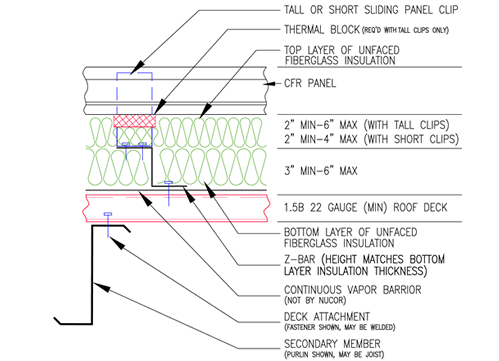MWPC
Structural
- Sep 2, 2005
- 104
All,
The owner and architect want to place a standing seam metal roof over an existing conventional bar joist and metal deck roof system. The slope of new roof would be parallel to the joists. Joists span 45', are spaced 4' oc and have panel points about 4' oc. Narrow rib metal deck with 5" of insulation and a BUR. I am looking for framing suggestions.
On past projects with shorter spans and bearing walls, I have used light gauge trusses at 8' oc and hat type purlins at 4' oc or so to support the standing seam roof. In this case, providing a structure over the existing structure seems like overkill. The existing structure is adequate for the loads. I have considered running beams perpendicular to the joists at 4' oc with stub columns down to the joists. Lots of little pieces and cutting holes through the deck to weld the columns down for up lift. Architect suggested bearing walls at 4'oc cut down to the deck but there would still be point loads at each joist and uplift connections to deal with.
I assume this has been done many times before and I would like to avoid reinventing the wheel. Making budget would help too!
Thanks
Ken
The owner and architect want to place a standing seam metal roof over an existing conventional bar joist and metal deck roof system. The slope of new roof would be parallel to the joists. Joists span 45', are spaced 4' oc and have panel points about 4' oc. Narrow rib metal deck with 5" of insulation and a BUR. I am looking for framing suggestions.
On past projects with shorter spans and bearing walls, I have used light gauge trusses at 8' oc and hat type purlins at 4' oc or so to support the standing seam roof. In this case, providing a structure over the existing structure seems like overkill. The existing structure is adequate for the loads. I have considered running beams perpendicular to the joists at 4' oc with stub columns down to the joists. Lots of little pieces and cutting holes through the deck to weld the columns down for up lift. Architect suggested bearing walls at 4'oc cut down to the deck but there would still be point loads at each joist and uplift connections to deal with.
I assume this has been done many times before and I would like to avoid reinventing the wheel. Making budget would help too!
Thanks
Ken

